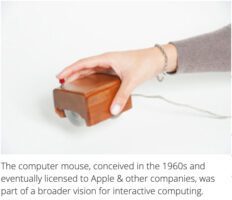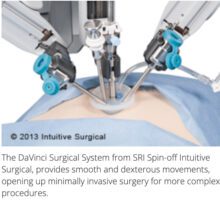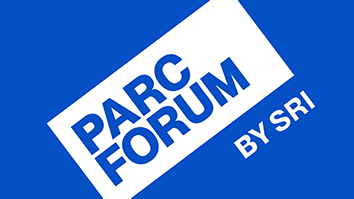Though I spent almost my entire professional life at SRI, given a researcher’s necessary preoccupations it took effort to learn what was happening across this diverse place of intrinsic creativity. This became more apparent when I began compiling an account of that creativity, some of which turned out to alter the world. SRI’s new timeline of innovation is an attempt to show you, with much greater ease, some of the Institute’s notable accomplishments.

My explorations of SRI’s work resulted in a book about SRI that reveals some of its major contributions and their imprint on the world. The book also includes a bit of SRI’s organizational history and something of how it functions. I called it A Heritage of Innovation — SRI’s First Half-Century because creative insight and innovation have been SRI’s lifeblood since its founding just after World War II.
If you work at SRI, you soon become aware of some of its most important legacies such as the origins of personal computing, the first automation of banking that led to worldwide banking standards, important contributions to internetworking, and, more recently, telepresence surgery. But the innovation stream at SRI runs both deep and wide and, just as you might expect, not all of them make a big splash. This new timeline attempts to illuminate many of them, but countless more lay below the surface, some never to have an impact and some awaiting history’s confirmation of their importance.
You may be surprised to learn that the first demonstrations of computer networking and internetworking occurred at SRI 44 and 37 years ago, respectively, and that small but iconic contribution to personal computing, the mouse, emerged almost a half-century ago! Sometimes that leads to the disappointment of being ahead of society’s readiness to absorb its offerings.

For example, in 1981 Apple Computer purchased a paid-up license from SRI for the computer mouse. That was some 16 years after it was invented and 11 years after it was patented. When the Macintosh appeared in 1984, only three years were left on SRI’s patent.
In a place where research is your business, you might say that, appropriately, research outcomes shouldn’t live long. Research projects are completed, and other opportunities and interests should naturally arise to take their place. And the timeline you see looks eclectic. But that impression is due more to the diversity of SRI’s interests and talents across the family of problems it attacks rather than from casual research ventures. Though there are exceptions, most innovation comes from deep topical knowledge applied to individual problems. Maintaining a stream of research contributions to select fields is important in many areas and absolutely critical when advancement of knowledge is the only outcome. A prime example of the latter is SRI’s contribution to research in the upper atmosphere that has continued uninterrupted for more than 60 years.
Similarly, SRI’s long continuous contribution to artificial intelligence (AI) recently earned it the leadership role for DARPA’s integration of essentially all of this nation’s AI labs in building a machine-based cognitive assistant. AI Center members often leave to fill full professorships in that field. By excelling in these fields, SRI helps define the state of the art where many innovations arise.

Apart from client-funded projects, another way SRI’s contributions advance is through a myriad of start-ups. Some of these have been formed by ex-SRI staff, sometimes with but often outside of SRI’s continued interest. Only in the last two decades has SRI more fully realized the value of promoting and participating in the exploitation of its intellectual property (IP). The ability for this exploitation was greatly enhanced through a 1984 Congressional act that permits nonprofit research organizations to retain IP rights and commercialize the work done for the federal government. With this enablement and added focus, SRI, with its long history in the South Bay, is now a serious player in the entrepreneurship cauldron that is Silicon Valley.
Finally, for any autonomous research institute to succeed, as SRI has, it must provide innovative solutions for its clients, at least in the context of the problem presented. Sometimes in conjunction with those solutions and sometimes from the realm of internally funded research, bold new ideas emerge. SRI is populated with people who love discovery, who are exhilarated by doing something for the first time, who live for the chance to make an important difference for their sponsor and beyond. The developments shown in the timeline confirm that passion.
Don Nielson retired from SRI as vice president of the Computer Science and Technology Division. He is a member of the SRI Alumni Association Hall of Fame and historian of all things SRI.


